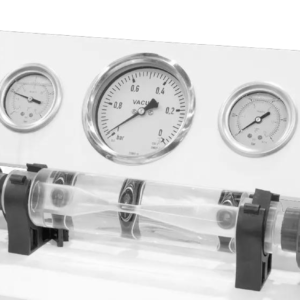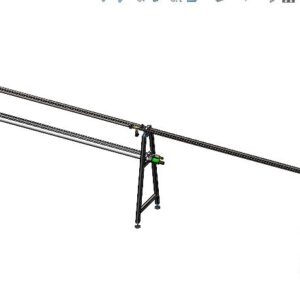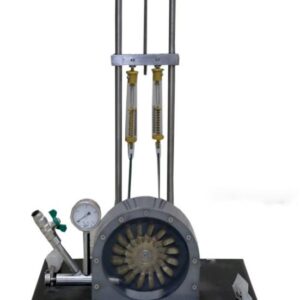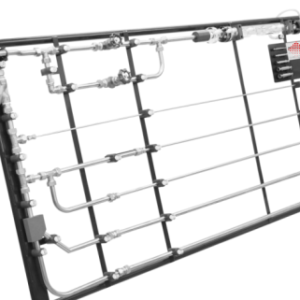OSBORN REYNOLDS DEMONSTRATION
S1-FM-104
- visualisation of laminar and turbulent flow in the Osborne Reynolds experiment
- water as flowing medium and ink as contrast medium
- vertical glass pipe section
- water tank with glass beads to stabilise the flow
- flow rate in the pipe section can be adjusted via a valve
- flow rate determined by S1-FM-101 Hydraulic Bench
- water supply using S1-FM-101 Hydraulic Bench or via laboratory supply
Description
The Osborne Reynolds experiment is used to display laminar and turbulent flows. During the experiment it is possible to observe the transition from laminar to turbulent flow after a limiting velocity. The Reynolds number is used to assess whether a flow is laminar or turbulent. The streamlines during laminar or turbulent flow are displayed in colour with the aid of an injected contrast medium (ink). The experimental results can be used to determine the critical Reynolds number.
The experimental unit consists of a transparent pipe section through which water flows, with flow-optimised inlet. A valve can be used to adjust the flow rate in the pipe section. Ink is injected into the flowing water. A layer of glass beads in the water tank ensures an even and low-turbulence flow.
The experimental unit is positioned easily and securely on the work surface of the S1-FM-101 Hydraulic Bench. The water is supplied and the flow rate measured by S1-FM-101 Hydraulic Bench. Alternatively, the experimental unit can be operated by the laboratory supply
Specification
Water tank
- Cylinder dia: 150mm Approx.
- capacity: 2200mL
Pipe section
- length: 675mm
- Ø, inner: 10mm Approx.
- Material: Acrylic
Tank for ink
- capacity: 250 mL
Measuring cup: 1
- LxWxH:400x400x1000mm
- Weight: approx. 15kg






Leave a Reply